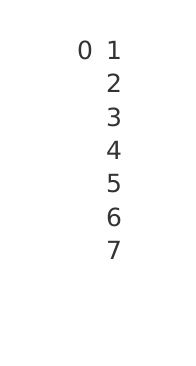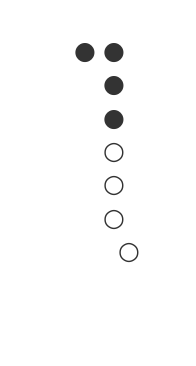Description
Glissandi by changing the breathing pressure have a much more limited range compared to finger glissando. They are always accompanied by dynamic fluctuations. They are also possible when playing on the headpiece (see also ;;;;;;;;;;;).
Compositions
John Casken:
Thymehaze (1979, for alto recorder and piano)
– p.1, line 2: the dynamic changes are also noted
Alex Arteaga:
Temenos (1996, for [amplified] bass recorder and CD)
– approx. 35th – 40th second (the piece is notated in a raster of seconds): the glissando in question implies a decrescendo
Kee-Yong Chong:
Invisible Cell (1993, for amplified recorder, amplified piano, percussion and cd)
– instruction: Crescendo and decrescendo with approx. Quarter tone difference
Factors influencing the Technique
An increase in breathing pressure not only leads to a crescendo, but also raises the tone if the player does not correct this by changing the fingering. This results in an upward breath glissando. The reverse is true for decrescendo and breath glissando downwards (see also ….). Depending on the intonatory flexibility of the fingering and the extent of the changes in breathing pressure, the maximum possible extent of the glissando is smaller or larger. It should be noted that the timbre of the glissando always changes parallel to the breath glissando. Indeed, under certain circumstances it can change considerably.
Special features
In the following some examples shall illustrate different tendencies of the intonational flexibility of individual fingerings. For all examples shown, it is true that they are accompanied by extreme dynamic and tonal differences. For most fingerings, pitch variations are limited to about a half to whole tone step. The greatest pitch variations (up to more than a major sixth) are found in the upper part of the 1st register for ‘open’ fingerings (see examples 3, 4, 6 for VII, I’, II’ below). Large fluctuations (tritonus) are surprisingly also found with a ‘closed’ alternative fingering for II (2nd register).
Examples for breath glissando
tenor recorder in c’, long bore (Yamaha Ahorn, YRT 61M)
1st register, lower edge:
Example 1:

scale degree I = c’ = lower edge of the 1st register
♪ Breath glissando from approx. b in pppp (fragile sound) to approx. c’ plus ¼ tone in mf (louder playing is not possible, as the fingering overblows very quickly), maximum range: ¾ tone
Within the 1st register:
Example 2:

scale degree V = g’= middle area of the 1st register
♪ Breath glissando from about f’ in pppp (fragile sound) to about gis’ in fff (‘stressed’ sound), maximum range: 1 ½ tone